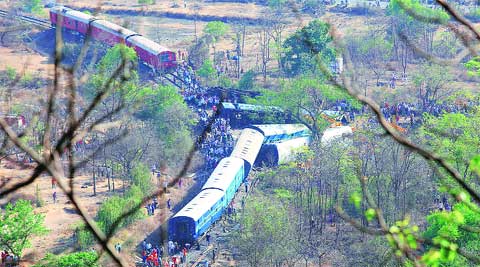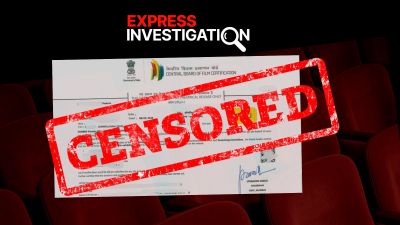Stay updated with the latest - Click here to follow us on Instagram
Keyman was just a km away from spotting danger
Keyman was required to inspect on foot the 8-km stretch near the Roha Diva-Sawantwadi passenger train derailment site
 The CR general manager defended the maintenance of rails, blaming the accident on the high hydrogen content in the rails. express
The CR general manager defended the maintenance of rails, blaming the accident on the high hydrogen content in the rails. express
The keyman, in-charge of the manual inspection of the 8-km stretch near the Roha Diva-Sawantwadi passenger train derailment site, which claimed 22 lives and injured 124 people, was short of a kilometer on Sunday, minutes before the derailment at 9.45 am. The train derailed after emerging from the Bhise-Khind tunnel at a spot marked in railway charts as ‘kilometre 135’.
Following the accident, the Central Railway (CR) is now contemplating adding one more keyman on a single line to avoid such fatal accidents.
The keyman, who started his duty at 8 am on Sunday, was inspecting the tracks along Nagothane and Roha section of CR . He had to inspect the rail from 130th km to 138th km and then return, checking the parallel rail. He was inspecting 134th km, when the accident took place at 135th km, confirmed officials.
The keyman is required to inspect on foot the railway stretch assigned to him, once a day. He inspects rails on both the tracks and bridges.
S K Sood, CR general manager, said, “Despite the availability of modern technology like the Ultrasound Flaw Detection (USFD) machine, the success rate of keymen is over 98 per cent.” Stating that there were 200 keymen in Mumbai division of CR, Sood acknowledged that they worked under extremely difficult conditions.
Meanwhile, citing the cause of the accident, the general manager defended the maintenance of rails, pushing the high hydrogen content in the rails as the main cause for the disaster. Sood said, “The welding between the two rails at the accident spot was in good condition. One of the rails was high in hydrogen content and was manufactured in 1992. After 1997, the Indian Railways had taken a decision to only procure rails which had less hydrogen content. However, the process of replacing the rails with high hydrogen content takes a lot of time and cannot be done overnight.”
The other rail, with less hydrogen content, was manufactured in 2005. The old kind of rail could have led to the accident, though the real cause will be determined only during the probe that will be conducted by the commissioner of railway safety, said Sood.
Differing from the speculation, railways sources said, “Even if the rail was old, given that it was being used on a curvature, the administration should have replaced it in due time.”
The general manager also added that for old rails, instead of an inspection every four months, the railways conduct a complete inspection every two months. “Inspection for the rail involved in the accident was done as per the schedule,” Sood said. He, however, failed to mention the date when the last inspection was conducted. Sood also blamed the state government for lack of support in railway accident emergencies and said absence of good hospitals, especially in remote areas, made it difficult for the railways to provide good medical aid to victims.
“Provisions should be made by the state government to provide air-lifting facility to give quick medical assistance to passengers,” he added.







